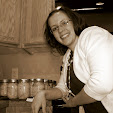Water is ESSENTIAL no matter what your level of preparedness.
It is recommended to have one gallon of water, per person, per day, for drinking and sanitation purposes.
Don't stress. Start small.
It is recommended to store a 2 weeks supply of water. That's 14 gallons per person.
For drinking water, you want to store your water in food-grade plastic containers. There are a lot of options out there from containers that hold a few gallons of water to 30 gallons.
Water bottles are a great way to store drinking water too.
For washing water you don't have to be as picky. I refill plastic soda bottles and old laundry soap jugs. These need to be rotated more often that the food-grade plastic but making a habit of refilling these bottles will make it easy to increase your water supply without a lot of extra thought and expense.
With my water storage, I separate what is stored for home use and what I would need if we had to leave home.
It's a great idea to keep a pack of water bottles in the car at all times. Not only will you have some water in case of an emergency, but they are convenient to have for trips or even just to cool off after playing at the park.
When thinking of water storage, you will also want to remember including water in your 72-hour kit. I also have a small, rolling suitcase filled with water bottles which is stored with my 72-hour kit bags. It's heavy but I could fit it in the car or roll it behind me, depending on which mode of transportation I would be using in an emergency.

A light addition for your 72-hour kits could be a water purifier bottle. It may not be realistic to have 3 gallons of water in each person's kit if you have to leave your car and go somewhere on foot. These may seem a little pricey, but most can filter just about everything out of the water and will sometimes safely filter 20-30 gallons of water before the filter needs to be thrown out.
Another item that you might want to store when thinking of water storage is BLEACH. Adding a tiny bit of bleach to some questionable water will help kill off bacteria that might be growing. Boiling water is another way to clean questionable water, but in some emergencies you may not have a way to boil your water.
Important: Keep water containers away from heat sources and direct sunlight. Do not store plastic on cement.
Here's a great link to FEMA for more information: Water
Good post from PreparedLDSFamily: How to Store Emergency Drinking Water
And LDS.org: Drinking Water Guidelines
This is step 1 on the PLAN 9 pamphlet put together by the Southwest Utah Public Health Department.



No comments:
Post a Comment